AND USING A SUPPORT
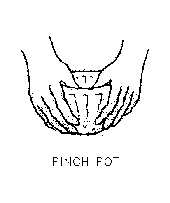
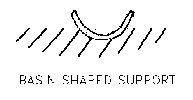
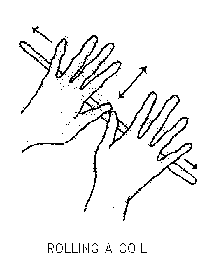
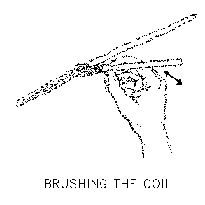
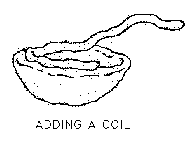
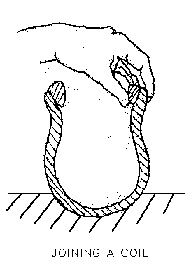
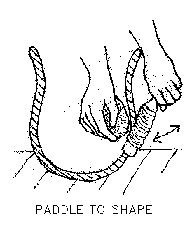
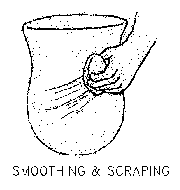
| PINCHING THE BASE AND USING A SUPPORT | |

| 1. To start, pinch your thumbs into the center of a ball of clay. Squeeze your thumb on the Inside with your fingers on the outside of the pot. Continue squeezing and rotating the pot until the walls of the vessel are about 1/4 in. thick. Fix any cracks which form by firmly pinching together the void and smoothing it over. |

| 2. Place the base in a hollow in the ground, or in a bowl shaped vessel which can be rotated easily by the potter as the pot is built up. |
| ROLLING, BRUSHING, ADDING AND JOINING THE COILS | |

| 3. Pots of New England Indians were built up from coils or ropes
of clay. The coils ore rolled between the palms of the hands or
rolled against a flat surface in a back and forth and center to
ends direction. Coils range from 1/2 to 1 inch in thickness. |

| 4. To be joined properly, the coils should be roughened using a moistened stiff brush. This helps seal out any air when the calls are squeezed 10gether, and helps keep the coil moist while it is being added to the pot. |

| 5. Add a coil. one foot or longer, around the inside rim of the
pot being held in its support. |

| 6. The coils must be firmly joined to the pot or cracks will appear when the pot dries. Attach the coil to the pot using your thumb to press downward against the coil on the inside of the pot. At the same time pull upward with your fingers on the outside of the pot. This will actually weld the coils together. If the coils are not well joined. cracks will appear as the pottery dries. |
| PADDLING, SMOOTHING AND SCRAPING THE POT | |

| 7. Join coils in A spiral direction until a rough form of the pat is made, or until the addition of more moist coils will cause the pot to slump under the weight. If the pot dents when it is tapped, let it dry until it feels like leather, and does not dent easily. When the pot is leather-hard, the pot is paddled with a cord-wrapped stick. Paddle the pot to its final form using a smoothed cobble on the inside of the pottery wall for support. Paddling helps compress and strengthen the clay and decorates the outside of the pot with cord marks. |

| 8. A smooth, flat scraping tool may be used on the pot to compress cracks or smooth the pot for more decoration. |

|
Text and Graphics
© 1994 - Tara Prindle unless otherwise cited. |